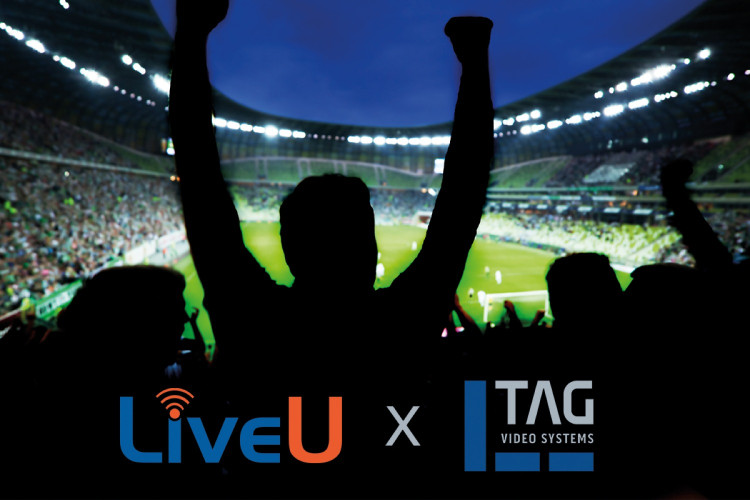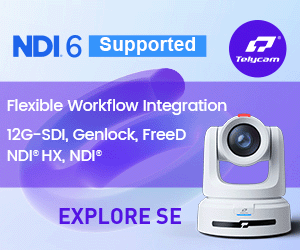As my job title suggests, I’m responsible for planning and executing technology projects across ITV’s Daytime, including outside broadcasts, which are central to what we do. We broadcast live for more than six hours every weekday with four shows: Good Morning Britain, This Morning, Lorraine and Loose Women. With a history as one of the main UK terrestrial broadcasters – of course, we have also evolved alongside the industry in terms of viewing options – we have high standards. We constantly generate new ideas to keep audiences engaged and we also need to be responsive to the latest breaking news.
Additionally, I’m responsible for looking at new technologies and deploying and integrating them when required. No two days are the same and it’s quite a wide remit.
Approximately three years ago we began to use LiveU. Why? What did we see as the advantages of cellular bonding? At the time, there was understandably still quite a lot of romanticism about using satellite trucks alongside familiarity with the workflow. For us to develop and share the understanding of how best to use LiveU and to fully embrace the technology took us about six months. But the potential advantages were clear from the start: we could begin to punch above our weight in terms of how and what we could cover. The flexibility, mobility and cost-effectiveness have made us masters of our own destiny.
Central to this was the decision to develop a fleet of hybrid vehicles – hybrid in terms of both powertrain and connectivity (Ka-band and LiveU). We worked closely with Garland Partners, LiveU’s UK partner. Part of this decision was also an environmental one. I sit on the “Green Team” here, meeting once a month, to continue to explore and implement environmentally aware solutions.
Each hybrid vehicle is IP-based and equipped with an auto-pointing Explorer 8100 satellite dish from Cobham that works to open up an internet data path to the on-board LiveU transmission equipment for areas where there is insufficient cellular coverage. Instead of beaming pictures out via satellite alone, the LiveU unit aggregates all available bandwidth and sends pictures back to ITV’s studio via multiple internet paths, where the signals are then reconstructed to present the programme content live and in low delay. Each vehicle is fitted with LiveU’s flagship LU600 HEVC model, with each unit also able to be attached to a camera or carried in a backpack. In reality, the satellite connectivity is mainly used to bring internet connectivity in and to act as the backup solution.
We use multiple additional backpack LU600 HEVC units, beyond those with the vehicles. We have adopted HEVC to be much more efficient with our bandwidth use while ensuring the quality we need with sub-second latency. Upwards of 90 per cent of what we do with LiveU is live, though we are looking at expanding our use of store and forward too.
In addition, we use LiveU’s LU200 units and the recently introduced LU300 with its small form factor and HEVC capabilities. We also use the LiveU smartphone app LU-Smart. We take full advantage of LiveU Central, the web-based, unified management platform. Operators in the gallery can manage the units, look at the connectivity while the shows are on air and ensure optimum image quality. A cameraperson can then simply carry on with being a camera operator and not have to worry about connectivity.
Using cellular bonding isn’t only about replicating what we did with traditional OB units. While it didn’t happen overnight, gradually we began to think differently about what we could achieve. For example, earlier this year, longstanding ITV correspondent Richard Gaisford delivered a live report from a gyrocopter, which was to be used by James Ketchell to attempt to circumnavigate the world, a first. It was incredibly well received as a piece.
We have also taken advantage of LiveU’s special platform enabling us to connect with other LiveU users around the world. We did this for a live piece with Uri Geller, who we covered using a freelancer from Geller’s base in Israel. It worked perfectly and as well as being cost-effective, was also much more environmentally friendly than flying someone to film Uri.
We have also deployed cellular bonding for redundancy too. A key example of this was our coverage around this year’s Oscars. We sent two main presenters and a small team to cover all the star-studded glamour from an LA-based OB unit back to London for a special episode of Good Morning Britain (GMB can be found on ITV, every weekday from 0600 till 0830). With our London studio (Studioworks) in full presenter-led mode ready to receive that Oscars contribution via a traditional uplink/downlink, the investment was already 'protected' to an extent (as opposed to going straight to air with that content from the OB unit). However, any drop out of that coverage would have been highly disruptive to programming and our viewers. It would have been 'Back to the Studio' until we could resume that US feed.
As we have three LiveU receivers (12 ports) onsite in W12, we decided to run an LU300 in HEVC and low-latency (0.8ms) mode as a back-up path of the OB - across the internet and Atlantic to London. This way, if the satellite feed was compromised - by weather i.e. high-winds, rain-fade or a solar flare (yes, it has happened) - then we had that second mechanism, extra protection and diversity, primed and ready, that not even two satellite uplinks could provide.
We are constantly evolving and increasing our use of cellular bonding. In the time that we’ve used LiveU, we’ve seen major strides in their product and service development and we have no doubt that will continue. Cellular bonding is now the de facto newsgathering tool. Beyond the strength of their product and services portfolio, the level of support we have received from Garland and LiveU has been great. This is crucial. It’s brilliant to have the feeling that you are benefitting from leading services and solutions.







































